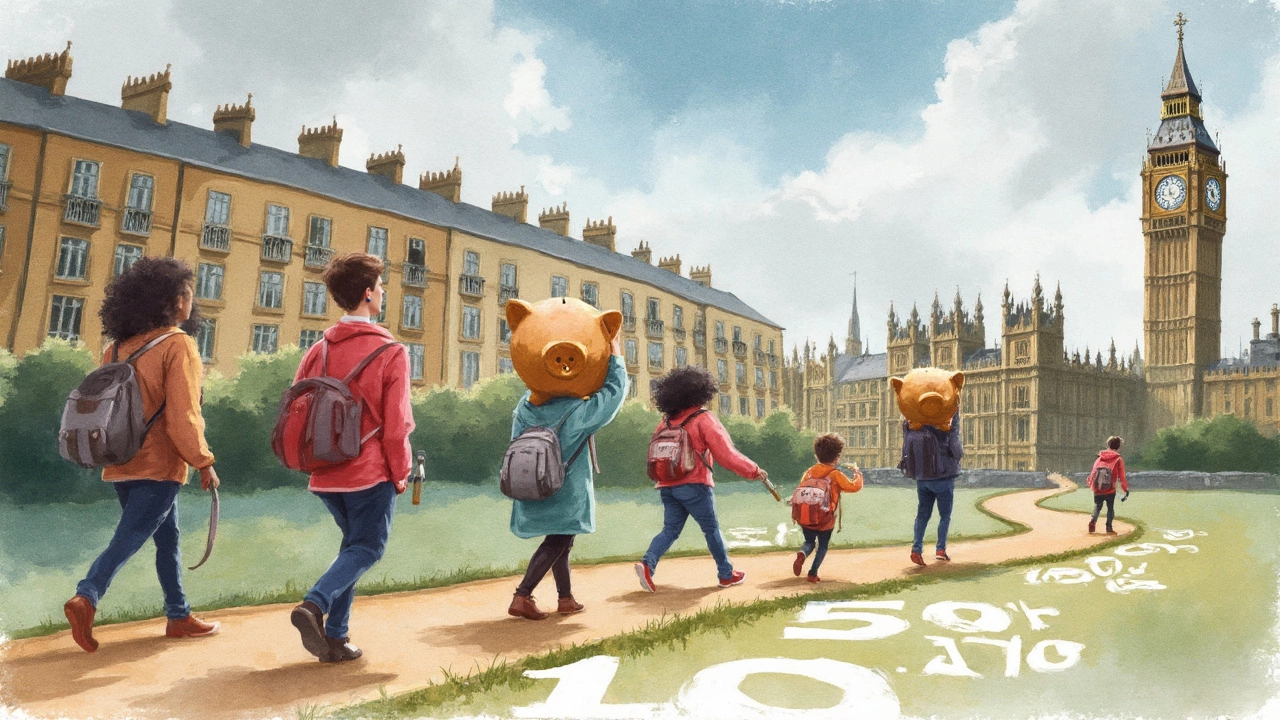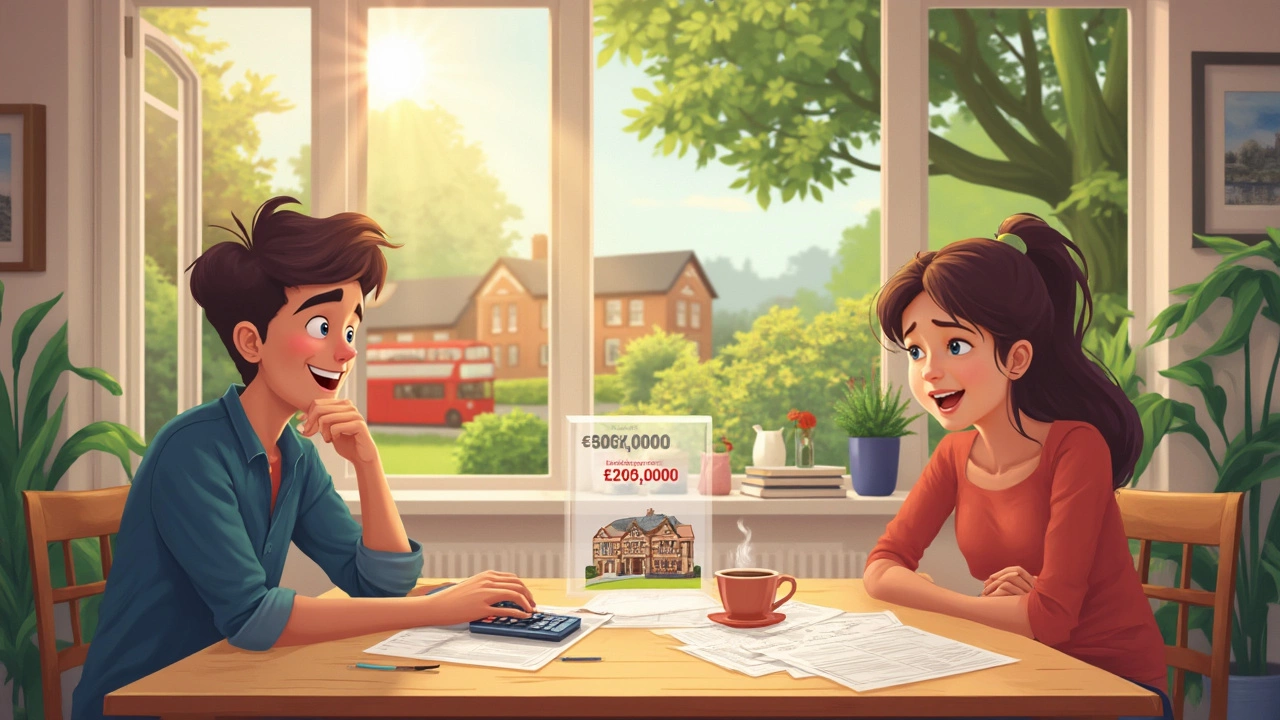Saving for a house deposit feels a lot like climbing a mountain with a fridge strapped to your back. And people love to talk about the "20 percent down payment," throwing those words around like everyone's got a vault full of cash hidden under the bed. But what does a 20% down payment on a $300,000 home actually mean in cold, hard numbers and real-world consequences? Stick around, and you'll see just how much money we’re talking about, why that percentage is a big deal, and smart moves to make the whole thing less painful.
What Does 20 Percent Down Really Mean?
Imagine you walk into a bank and tell them you want to buy a $300,000 house. The bank smiles politely but basically says, “Put some of your own money on the line first.” That’s the down payment. When someone says "20 percent down"—well, let's break down what it takes.
Twenty percent of $300,000 comes out to $60,000. That’s a big chunk of money, like the price of a couple of nice cars or enough takeaway fish and chips to feed a rugby team for years. This $60,000 isn’t just an arbitrary figure, either. Lenders historically love the 20% mark because it shows you’ve got skin in the game, and it gives them peace of mind. If, for some awful reason, you can’t keep up with the mortgage payments, they know there’s a buffer built in if the house has to be resold.
Here’s the simple math:
| House Price | Down Payment Percentage | Actual Down Payment |
|---|---|---|
| $300,000 | 20% | $60,000 |
When you pay this 20%, you then ask the bank to lend you the remaining 80% ($240,000 in this case), and that becomes your mortgage. But here’s the real kicker: having that 20% upfront often puts you in a way better position to negotiate better mortgage rates and dodge some annoying extra charges like lender's mortgage insurance (LMI).
If you’re wondering why lenders care about that 20%, it boils down to risk. With less money borrowed, there’s less for them to lose—so they’re a lot happier lending to you.
Why Aim for the 20% Mark?
Shooting for a 20% down payment is a game-changer for people looking to buy their first or next house. You get access to better mortgage deals, plus you might dodge some of those surprise costs that eat away at your savings. Wondering how? Here’s how it plays out:
- No lender’s mortgage insurance (LMI): In places like New Zealand and Australia, if you put down less than 20%, banks often make you pay LMI—a kind of insurance that protects them, not you, if you can’t pay the mortgage. On a $300,000 home, LMI could set you back thousands.
- Lower monthly mortgage payments: The more you pay upfront, the less you’ll owe the bank, so your monthly repayments are smaller. That keeps your stress levels (and interest costs) down.
- Better interest rates: Lenders think you’re less risky with a bigger down payment, so they’re more likely to offer you a sweeter deal on mortgage interest—it could save you heaps over the years.
If you take the lower down payment path, other roadblocks pop up. For example, in New Zealand, the Reserve Bank has rules on how many low-deposit (less than 20%) loans a bank can approve. So even getting approval for a low-deposit mortgage is harder, and you might end up accepting a higher interest rate.
And the psychological side: having a chunk of equity in your new place means even if the market dips a little, you aren’t instantly in negative territory. That’s a comfort, especially when the market moves as fast as Auckland’s traffic on a wet Thursday.

Down Payment Myths and Realities
Loads of people think if you can't get 20%, you’re out of luck—game over. That’s simply not true. Lots of folks get into the housing market with less than 20%. But here’s what really happens if you make a smaller down payment:
- You could still buy, but expect to add on extra costs (like that mortgage insurance we talked about).
- Your application might take longer and may get more scrutiny from the lender. Be ready to cough up more documentation showing your steady income, good credit record, and genuine savings.
- If you’re using KiwiSaver in New Zealand, or other government homebuyer schemes in similar places, you may be able to use savings or get top-ups to help you reach the magic number. Sometimes government schemes let you buy with as little as 5% or 10% down, but expect those extra costs to pop up.
- Family help (“the bank of mum and dad”) is increasingly common. Gifting or lending part of the down payment can help you boost your deposit—just make sure everyone is crystal clear on whether that money is a loan or a gift.
One thing a lot of first-timers overlook: every dollar you save up for a bigger deposit saves you on interest over the life of the loan. For example, let’s say you only save a 10% down payment on a $300,000 home ($30,000). You’d be borrowing $270,000 instead of $240,000, and that extra $30,000 borrowed could add tens of thousands in interest over 25 or 30 years. Banks aren’t shy about collecting. The laws of compound interest make sure of that.
Quite a few people also think that paying more than 20% upfront doesn’t add value. Actually, the more you pay upfront, the more blessing (and less debt) you have. It also adds a buffer if house prices dip a little in the first few years after you buy it.
Tips to Reach Your Down Payment Goal
Saving $60,000 (or more) isn’t easy—unless you’re a Lotto winner or selling your old Pokémon cards for millions. But I’ll tell you, living in Auckland with Rex, budgeting is a real, everyday thing. Here’s how you can get closer to that 20%:
- Set a realistic goal: Work out exactly how much you need. Don’t forget to factor in other homebuying costs like legal fees, valuation, and maybe a builder’s report. On top of the down payment, you might need $5,000–$10,000 extra set aside just in case.
- Automate your savings: Set up a dedicated account for your house deposit and arrange automatic transfers on payday. Even a little bit every week adds up way faster than you’d expect.
- Cut back where you can: The usual stuff—skip takeaway coffee or swap the Friday pizza with a homemade version. Take inspiration from the folks who share their “no-spend months” on social media. Some even move back in with family for a year to turbocharge their savings.
- Consider side gigs: From dog-walking (trust me, Rex would love it), to freelancing, or selling stuff you don’t use—extra income streams can fast-forward your savings goal.
- Make use of KiwiSaver or similar homebuyer savings programs: In New Zealand, first-time buyers can tap into their KiwiSaver after three years; it can really give your deposit a jumpstart. Check conditions and get advice so you’re on the right track.
- Set check-in points: Every three or six months, check your progress. Celebrate milestones—don’t be too hard on yourself. Life happens, and even Rex knows treats work better than scolding.
And hey, property prices aren’t static. If local prices move up or down, adjust your savings target accordingly so you don’t get caught short on settlement day. Make sure to talk with a financial adviser or mortgage broker—a good one can open your eyes to deals you didn’t know existed or point out smarter savings options to maximise your hard-earned cash.
Don’t forget: it’s not just about hitting the 20%. Putting extra towards your mortgage in the early years—if you can manage it—means less interest paid over time. Some banks let you make extra repayments without penalties. Run the numbers (free mortgage calculators are everywhere online!), and see how those little extras stack up.
If you’re keen on getting onto the property ladder but $60,000 isn’t realistic right now, don’t despair. More of us are teaming up with friends or siblings to buy a first home together. Co-ownership comes with its own paperwork headaches, but it’s an option that’s helping Kiwis get into their own home sooner. The main thing is to get clear on the rules up front—good fences make good neighbours, but a good contract keeps friendships intact.
Last thing: house prices can jump around, but the core rules about the 20% down payment stay the same—you’re putting up $60,000 for a $300,000 home. Aim for that target, and even if you fall short, you’ll be way better off than if you’d waited for the perfect time. Buying a home isn’t just about the numbers on a bank statement—it’s about creating a space you can call yours. (And if you’ve got a dog like Rex, making sure there’s a patch of lawn for fetch is absolutely essential.)
